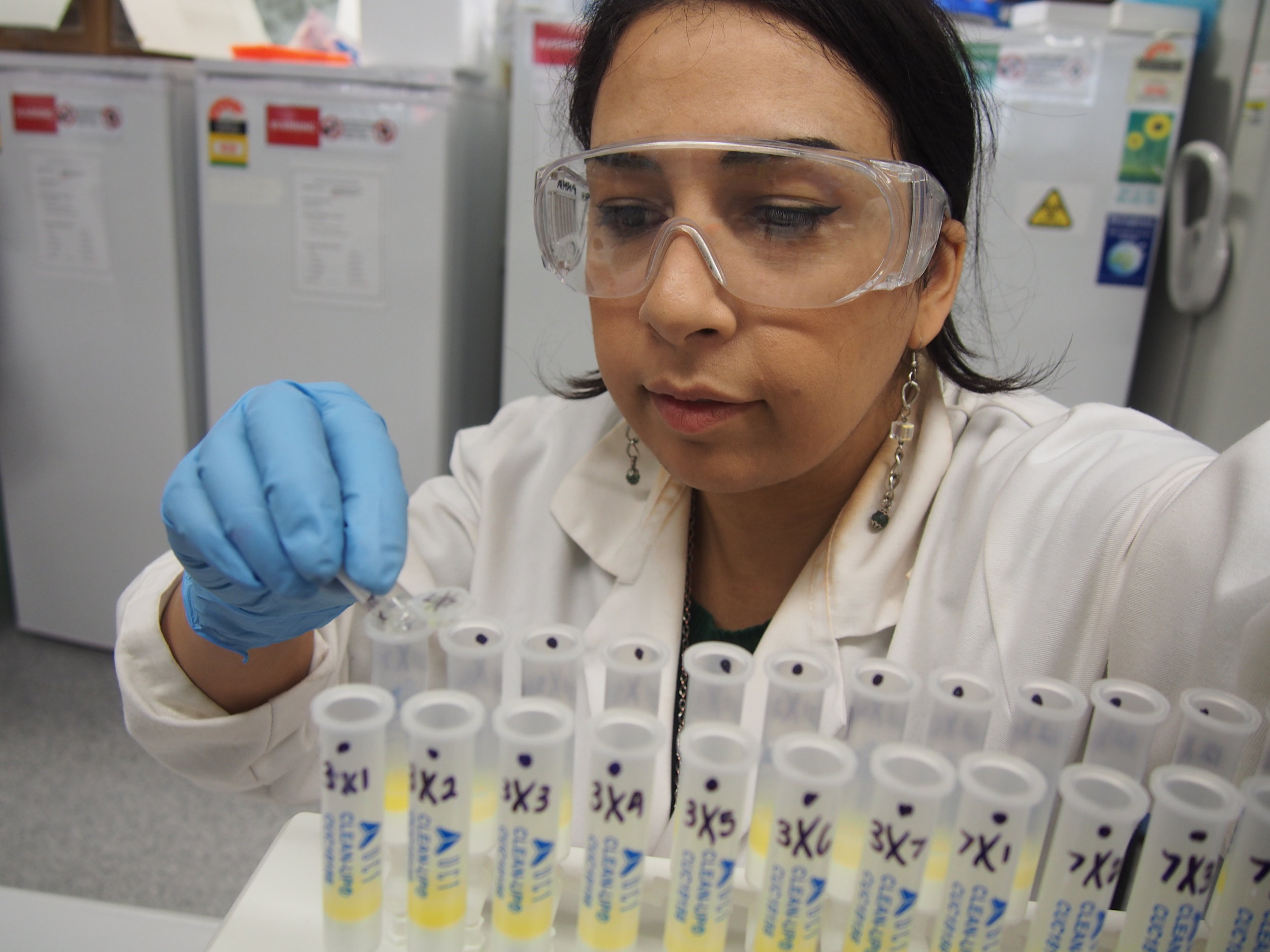Does stress change the behaviour of zebra finches and their offspring? Anna Miltiadous is peeling apart an intergenerational mystery.
Illustration by Leigh Douglas
Ethograms is a monthly column published in collaboration with the Australasian Society for the Study of Animal Behaviour (ASSAB), showcasing the work of early-career researchers. Johanne Martens is a PhD candidate at Deakin University, and an outreach officer for ASSAB.
Zebra finches are amazing little birds. Despite weighing only 10-15 grams, they survive in the arid, scorching hot zones of inner Australia. Out in the Red Centre, their calls — best described by the birds’ local Pitjantjatjara name, nyi nyi — follow you on every hike. To survive and thrive under the harsh desert conditions, they must be flexible, and even more so in the face of rising temperatures due to climate change. They are opportunistic breeders that can react quickly to favourable environmental conditions, like good food and water availability.
This flexibility makes them a fantastic study species. Anna Miltiadous, a PhD candidate at Deakin University in Geelong, Victoria, is using zebra finches to study how birds respond to stress, and whether these effects can span across generations, as a driver of evolution. “They are easy to breed, and have a rather short generation span,” says Miltiadous, “and, as in all birds, their developing embryos, being in an egg, are free from additional maternal hormonal influence after laying.” This makes them perfect for developmental studies.
Miltiadous’ work is based on findings by a post-doctoral researcher in her lab group, Ondi Crino, and colleagues, who found that, contrary to predictions, experiencing stress as a juvenile can increase adult reproductive success in male zebra finches. With a focus on conservation, Miltiadous wants to find out how the stress of a mother — caused, for example, by food shortage or presence of predators — influences her offspring even before they are born.
PhD candidate Anna Miltiadous is interested in the intergenerational effects of stress. © Anna Miltiadous
Instead of stressing out her birds manually, Miltiadous directly dosed them with the main avian stress hormone, corticosterone (CORT), by adding it to their diet. CORT is used in many studies of stress, and previous work has shown its effects, for example, on feather growth, cognition and begging behaviour. In this experiment, half of the parent birds received seeds covered in CORT-infused oil, whereas the other half received seeds covered in oil without additives. “You need a lot of patience to train your birds to eat seeds with peanut oil on them during certain times of the day, but it’s also fun,” says Miltiadous.
As a first step, to see if finch mothers pass on stress to their offspring, Miltiadous snap-froze the tiny zebra finch eggs shortly after they were laid, and carefully peeled apart the layers of their egg yolk, to analyse each layer separately for CORT.
When a zebra finch produces an egg, the yolk is formed in the ovary, layer by layer. It is then encapsulated by a membrane, then the albumen (egg white), then another membrane, and finally the egg shell. This process is very quick; production of an egg only takes 24 hours. Therefore, the stressors that cause maternal CORT to rise, leading to CORT deposition in the egg yolk, can be timed quite accurately.
Due to the membrane around the yolk, CORT doesn’t readily spread into the albumen. But Miltiadous showed that mothers who were fed CORT had higher levels of the hormone in their blood plasma, which in turn elevated levels in their egg yolks. There was no difference in CORT concentration between the outer and inner yolk layer; the yolk is probably too small to show layer-specific differences in CORT concentration.
Two zebra finch offspring used in the experiment, as nestlings (left) and later as near-fledglings (right). © Anna Miltiadous
So what happens to offspring that are exposed to increased CORT levels during their development? In another experiment, Miltiadous dosed juvenile finches with CORT and then studied their mating behaviour. Zebra finches are very social birds, and may be able to recognise when a prospective mating partner has had a stressful development. But physiological differences between the stressed and unstressed group, such as weight differences, disappeared after a short period of time. In addition, the birds seemed unable to detect any differences among themselves in relation to juvenile stress — when choosing a mate, they did not avoid birds that were stressed in their early life stages.
One reason for this may be that, in zebra finches, these conditions do not result in decreased quality. Indeed, stressed birds produced more offspring and provided better paternal care, though they do not live as long as non-stressed birds.
During the next stage of her PhD, Miltiadous will let her freshly-formed finch couples breed and then look at their offspring’s DNA, to find out if the consequences of stress are visible as epigenetic changes across generations. These changes may further affect the birds’ behaviour and lifespan.
Miltiadous’ work not only gives us insight into how biochemical processes influence an animal’s behaviour, but also has fascinating implications for conservation. Birds treated with the stress hormone CORT may produce more offspring, suggesting that a bit of hardship early in life pays dividends later on. Once this has been fully explored, the results from these tough little desert finches could benefit the conservation of endangered species, as a way to increase offspring numbers in captive populations.
Edited by Andrew Katsis

































































